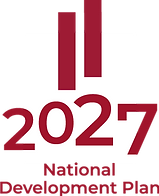
Par mums.
Kopš uzņēmuma dibināšanas brīža Temeso sniedz pakalpojumus, iedziļinoties klienta vajadzībās un piedāvājot nepieciešamo risinājumu.
Par uzņēmumu
SIA “TEMESO” ir uzņēmums, kas darbojas mašīnbūves, metālapstrādes un citās saistītajās rūpniecības nozarēs. Uzņēmuma pamatdarbības veids ir produktu izstrāde, prototipēšana un ražošana. Sniedzam arī mašīnbūves un iekārtu būves projektēšanas pakalpojumus, konsultējam klientus dažādos ar ražošanu un inženieriju saistītos jautājumos. Uzņēmums darbojas kopš 2015.gada.
Misija
Veidot labvēlīgu vidi ražošanas un apstrādes rūpniecības nozarē jaunu produktu un ideju realizācijai, ražošanas procesu attīstībai un pilnveidošanai.
Vīzija
Kļūt par vadošo augstas kvalitātes inženiertehnisko pakalpojumu sniedzēju ražošanas un apstrādes rūpniecības nozarē, kura risinājumi balstīti uz zināšanām, pieredzi un radošumu.
Iesaistīšanās nozarē un ES projekti
Kopš 2020.gada esam Latvijas drošības un aizsardzības industriju federācijas (DAIF) biedri.

Kopš dibināšanas brīža Temeso aktīvi iesaistās nozarē. Esam Mašīnbūves un Metālapstrādes Rūpniecības Asociācijas (MASOC) biedri. Kopā ar MASOC un Rīgas Tehnisko universitāti (RTU) tiek realizēts projekts "Studentu konstruktoru birojs". Aktīvi iesaistam RTU MTAF studentus apmācībā un darbā savā uzņēmumā, lai sniegtu pirmās prakses iespēju jaunajiem speciālistiem vēl studiju laikā.
Projekts „Metālapstrādes klastera attīstība” Projekta Nr.KAP/2.3.2.3.0/12/01/007


2018. gadā Temeso ar Baltijas Vides Foruma palīdzību un Eiropas Savienības LIFE programmas projekta "Baltijas pilotpasākumi bīstamo ķīmisko vielu emisiju samazināšanai ar aizvietošanu un resursu efektivitāti" (LIFE Fit for REACH, LIFE14 ENV/LV/000174) un Latvijas vides aizsardzības fonda administrācijas atbalstu īstenoja uzņēmuma modernizāciju, samazinot bīstamo vielu izmantošanu ikdienas darbā.



2021/2022. gadā SIA "Temeso" realizēja projektu Nr. VP-L-2021/108 saskaņā ar Eiropas reģionālās attīstības fonda projektu "Tehnoloģiju pārneses programma” (projekta identifikācijas numurs 1.2.1.2/16/I/001) inovāciju vaučeru programmā, lai Izpētīt bezpilota lidaparāta (fixed-wing) iekšdedzes dzinēja vibrācijas dažādos darba režīmos, izstrādāt vibrāciju dempferēšanas vadlīnijas un specifiskus konstruktīvos risinājumus iekļaujot novērtējumu par vibrāciju negatīvo ietekmi uz lidaparāta konstrukciju un autopilota sistēmu.

2021/2022. gadā SIA "Temeso" realizēja projektu Nr. VP-L-2021/108 saskaņā ar Eiropas reģionālās attīstības fonda projektu "Tehnoloģiju pārneses programma” (projekta identifikācijas numurs 1.2.1.2/16/I/001) inovāciju vaučeru programmā, lai Izpētīt bezpilota lidaparāta (fixed-wing) iekšdedzes dzinēja vibrācijas dažādos darba režīmos, izstrādāt vibrāciju dempferēšanas vadlīnijas un specifiskus konstruktīvos risinājumus iekļaujot novērtējumu par vibrāciju negatīvo ietekmi uz lidaparāta konstrukciju un autopilota sistēmu.



Recovery Fund Activities “Latvian Recovery and Resilience Mechanism Plan 2.2. Reform and Investment Direction “Digital Transformation and Innovation of Enterprises” 2.2.1.3.i. Investments “Support for the Implementation of New Products and December Services in Business” within the framework of the project SIA MASOC KC from 1 to 27 June 2024. 2.2.1.3.i.0/1/24/A/CFLA/007 “MASOC KC Support for the Development of Digital Products”.
Within the framework of the project “MASOC KC Support for the Development of Digital Products”, SIA “TEMESO” will launch the implementation of the research project No. D.3.3. “Development of a Multi-Application BPL Platform” on 1 November 2024.
The aim of the research project is to develop a new digital improved product, which includes the already developed unmanned aerial vehicle (UAV) base testing system and the modifications carried out, to develop a new multifunctional UAV platform with increased aircraft autonomy and digital solutions. The project corresponds to the development of digital products, as it improves the UAV sensor system and control system, which includes a number of digital solutions and improves its autonomy. To improve autonomy, it is planned to work on integrating an inertial navigation system into the UAV. The project plans to optimize the propulsion system, which also includes the manufacture of an engine and propulsion system test bench, as well as the creation and integration of a video system into an unmanned aerial vehicle (UAV) to enable observation and search missions. The new platform will be an UAV with observation, supply and data collection functionality. The main benefits of this platform will be higher speed (compared to other observation UAVs), maneuverability, resistance to GPS signal interference, ease of use, greater than other UAVs of similar parameters. Another advantage of this UAV can be considered its modularity and multifunctionality, which will allow using one single platform for various tasks. This would allow for flight in GPS signal interference conditions, and it would be able to autonomously perform an observation mission, collect data or deliver cargo. The result would be a surveillance BPS that is fast, maneuverable, and resistant to GPS interference. In addition, the project plans to work on the versatile use of the BPS, which would allow for various purposes with minimal use. A significant part of the project is intended to improve the efficiency of the BPS, which allows for increasing its performance indicators. Therefore, work is planned to develop a system engine/drive test bench, which would allow for optimizing the operation of the BPL engine and propeller. In addition, the results of the research planned during the project will be partially published or disseminated in at least two scientific articles or conferences indexed in the Web of Science, SCOPUS, ERIH (A or B) ScienceDirect or Elsevier databases.
The research project is planned to be implemented by December 31, 2026. The total cost of the project is planned to be EUR 272,600.00, including EUR 198,080.00 - financing from the European Union Recovery Fund.
During the period from 01.11.2024 to 31.12.2024, two significant tasks were completed:
1. A CAD model for the Drive Module Test Stand was developed.
2. A schematic representation of the inertial navigation system's operation was created, and potential components were identified.
The work done will serve as a foundation for future tasks in the next stages of the project. The next phase will focus on the manufacturing of the drive module test stand and the testing of the drive modules. Simultaneously, work will be done on developing the operation schematic of the video control system and selecting components. Both the video system and the inertial navigation system will later be integrated into the TEMESO unmanned aerial vehicle's control system. Initially, the plan is to create a laboratory prototype to test the system's operation.
Progress Report (01.01.2025 – 31.03.2025)
During this period, two key milestones were achieved:
-
The assembly and manufacturing of the propulsion unit test stand were completed.
-
A functional schematic for the video module was developed, and potential components were identified.
Insights from the test stand assembly:
-
Special attention must be paid to mounting internal combustion engines using elastic, vibration-dampening elements to ensure accurate measurements.
-
Detailed documentation is crucial during testing.
The completed test stand enables the following measurements:
-
Real-time engine RPM
-
Instantaneous fuel consumption
-
Engine thrust
-
Critical temperature readings
-
Actual accelerator position
Video Module Development:
The module was split into two functional units:
-
One for FPV (First-Person View), optimized for short-range precision maneuvering
-
One for surveillance, compatible with various camera types
These developments form a strong foundation for the next project phases. Upcoming tasks include creating and executing a propulsion test plan, alongside defining the goals for the scientific research component.
During the period from April 1, 2025, to June 30, 2025, two major tasks were completed within the framework of the research project:
conducting propulsion system tests and preparing a detailed testing report,
formulating the scientific research task based on the results and observations obtained during testing.
The propulsion system testing process provided several key insights that enable a more precise definition of requirements for the subsequent stages of design and optimization.
1. Selection of propulsion configuration.
The test results demonstrated that the most optimal propulsion type for the planned unmanned aerial vehicle (UAV) is a two-stroke (2T) internal combustion engine combined with a 22×10 propeller. This configuration provides the best balance between thrust, fuel consumption, and overall system efficiency in terms of weight.
2. Evaluation of the electronic fuel preparation system.
Testing the engine equipped with an electronic fuel preparation system revealed that, although fuel consumption was reduced on average by 5%, the implementation of such a system is not economically viable. The high cost of the required hardware (sensors and actuators) and the complexity of calibration significantly outweigh the potential benefits, making this solution unsuitable for the chosen platform.
3. Impact of air filter design.
The tests indicated that the engine air filter requires an open mesh-type construction. Commercially available solutions substantially reduce airflow efficiency and therefore negatively affect engine performance and power output.
4. Necessity of carburetor adjustment.
It was observed that, prior to each take-off, the carburetor must be adjusted to the prevailing environmental conditions (temperature, humidity, pressure). Failure to perform these adjustments may result in unstable operation, increased fuel consumption, or a heightened risk of overheating.
5. Thermal behavior of the engine.
The critical overheating zone of the engine was identified in the upper part near the spark plug. Although no overheating was recorded during flight tests, ground testing revealed that special attention should be paid to engine operation in high ambient temperatures. This indicates the need to consider additional cooling solutions or structural adaptations in the future.
6. Fuel consumption monitoring.
The fuel consumption meter used on the engine test bench proved to be reliable and accurate. It was concluded that this sensor could be integrated into the UAV to provide real-time fuel monitoring during flight, significantly enhancing both operational safety and mission planning accuracy.
The work carried out has provided a valuable database that will serve as a foundation for the further development of the UAV platform. Analysis of the testing results enabled the formulation of the scientific research task, which focuses on optimizing the UAV’s aerodynamic shape and overall design. These results ensure a close connection between experimental work and subsequent theoretical modeling.
Action program of the recovery fund "Latvian Recovery and Resilience Mechanism Plan 5.1.r. 5.1.1.r. of the reform and investment direction "Increasing productivity through increasing the amount of investment in R&D" reforms "Management of innovations and motivation of private R&D investments" 5.1.1.2.i. investment "Support instrument for the development of innovation clusters" implementation rules within the competence centers" SIA "MAŠĪNBŪVES KOMPETENCES CENTRS" from September 13, 2022 to June 30, 2026 implements project no. 5.1.1.2.i.0/1/22/A/CFLA/006 "Mechanical Engineering Competence Center".
As part of the "Mechanical Engineering Competence Center" project, SIA "TEMESO" is starting on June 1, 2023, research project no. 5.1.1.2.i.0/1/22/A/CFLA/006 "Improvement of the control system and production technology of the unmanned aerial vehicle (target platform)". The aim of the research project is to develop a new UAV control station and antenna system developed by the company, as well as to improve the manufacturing technology of composite parts used in the company.
In the period from 01.06.2023 – 30.09.2023:
Within the framework of the intermediate stage, SIA "TEMESO" developed a CAD model of the ground station and its component list, the first prototype of the antenna system and samples of parts for further research of the production technology. In parallel with these works, tasks were defined for further research works planned in the next intermediate stage.
In the time period 01.10.2023 – 31.12.2023, two important works have been carried out:
1. The scientific study "Optimization of control frequency, communication and antenna" was carried out.
2. The scientific study "Improving the production technology of flax composite and testing samples" was carried out.
As part of the "Optimization of control frequency, communication and antenna" research, more suitable antennas for the UAV system and system parameters that allow to increase the operating distance were selected. In the tests of the antenna system, a working distance of 48.7 km was achieved with communication quality indicators corresponding to the operation of the system. At distances closer to the operation, but with a larger sector of operation, another antenna was found. A set of these actions gathered potential future improvements to further increase operating distance. All results were summarized in a study report.
As part of the study "Improving linen composite production technology and testing samples", the composite gluing technology used in the company was explored and tests were carried out with various material combinations and technological changes. As a result, a technology map and a database with various technology configurations and parameters of manufactured parts were compiled.
In the time period 01.01.2024 – 31.03.2024, the design of the prototype of the Ground station has been completed and the CAD model and description for the manufacturing of production forms have been developed, as well as the four of six modules of the prototype of the GS have been completed, manufactured and configured:
1. The module of transmitters and antennas placed in the unmanned aerial vehicle;
2. GS Ground antenna module;
3. Ground station system power supply module;
4. Ground station remote control module;
All these modules are fully assembled and set up. We expect to manufacture the remaining two modules (the basic module of the Ground station and the control computer) within the 4th intermediate stage. After the production of these modules, the Ground station prototype will be fully assembled and can be fully tested.
Extensive information analysis work has been carried out in the field of production technology improvement and a precise plan for the next steps has been drawn up to create a test batch of parts according to the knowledge gained during the project. Also, work has started on milling the models, which will make it possible to make a set of forms.
When planning the testing of the Ground station, it was concluded that for safe and controlled testing it is necessary to create a flying transmitter-receiver station (in the form of a quadcopter). This will allow tests to be carried out more easily and without significant limitations, which would be significantly more difficult with a large fixed-wing UAV. Work on the creation of this platform has already begun.
In the time period 01.04.2024 - 30.06.2024, the production of the prototype of the Ground station has been completed, the testing of the Ground control station has been carried out, and a batch of test parts with the improved linen composite technology has been produced.
In general, the planned results of the project have been successfully achieved. A prototype of the Ground control station has been created. It has been functionally tested, which shows the achievement of the initially set goals:
1. Stable operation of the system
2. System operation up to a distance of 40 km.
3. System modularity and rapid deployment.
The desired goals have also been achieved in the production technology section. Improved production technology, as a result of which UAV fuselage parts are manufactured with higher surface quality and greater strength. Natural fibre reinforcement material (linen fibre) has been preserved for these parts. On the other hand, the precision of the parts allows for higher quality manufacturing of the aircraft structure and improves the appearance of the final product. Hatches, wings and winglets have a more precise fit connecting to the central part.
The contract studies carried out within the project have made it possible to gather a large amount of theoretical and practical (laboratory measured) information. It significantly helped to carry out the project and provided a vision for the further development of the Unmanned Aircraft System. Further, it is planned to develop the long-range communication of the aircraft, improve the performance parameters of the unmanned aircraft and improve the operation of the unmanned aircraft system in the conditions of disturbances.
As part of the "MACHINERY COMPETENCE CENTRE" project, SIA "TEMESO" is starting on June 1, 2023, research project no. 5.1.1.2.i.0/1/22/A/CFLA/006 "Improvement of the control system and production technology of the unmanned aerial vehicle (target platform)". The aim of the research project was to develop a new UAV control station and antenna system developed by the company, as well as to improve the manufacturing technology of composite parts used in the company.
In general, in this project, a new prototype of the ground control station was developed and its testing was carried out, which confirmed the long-range operation, stability and resistance to bad weather conditions of the developed system. In the second section of the project, the technology of manufacturing linen composite parts was perfected, which was finally tested by making a batch of high-quality test parts. Both sections of the project included scientific research conducted by Riga Technical University.
The team of the „MAŠĪNBŪVES KOMPETENCES CENTRS” provided significant support in the implementation of the project, which helped to coordinate the project and advised or provided recommendations at several stages of the project.
The project has ended successfully, achieving the initially set goals, and also significantly increased the competence of SIA TEMESO in several areas.
